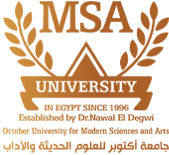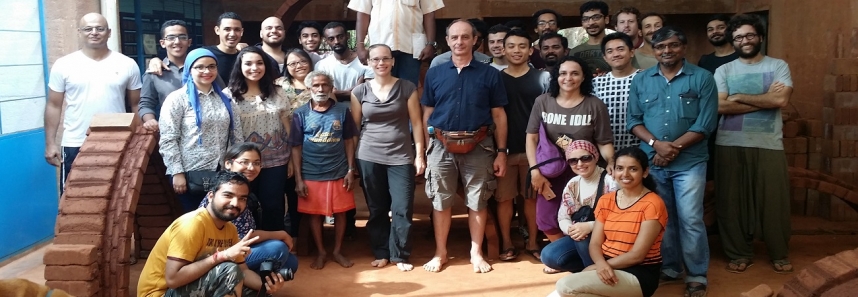Auroville Earth Institute (AVEI) is one of the world’s top centers for excellence in Earthen Architecture, working in 35 countries to promote and transfer knowledge in earth constructions. The work of AVEI has attempted to revive traditional skills and to link ancestral and vernacular traditions of raw earth construction with the modern technology of stabilized earth.
The Institute is located in Auroville “City of Dawn”, which is an experimental township in South India that initiated in1968. Auroville is meant to be a universal town where men and women of all countries are able to live in peace and progressive harmony, above all creeds, all politics and all nationalities. MSA team spent two tremendous weeks with Aurovilians, who come from around 49 nations, from all age groups, from all social classes, backgrounds and cultures, representing humanity as a whole.
Auroville is also concerned with, and practically researching into, sustainable living and the future cultural, environmental, social and spiritual needs of mankind. Water and waste management, recycling materials, reforestation, green constructions are applied everywhere in the city.
The aim of the two workshops is to promote principles of “Green Architecture” and to increase the awareness of students of Architecture as well as the academic staff at MSA University, in making use of “earth”, a local building material available all over the country, and developing appropriate technologies that are energy saving, environmentally-friendly and sustainable. This is achieved through preventing the use of firing in the production of bricks and most importantly minimizing the use of cement and steel (and consequently reinforced concrete) of which their industries are on the top of the list of energy and emissions intensive industries.
The first workshop (CSEB) covers the theory of CSEB as a substitute to fired bricks with basics on soil characteristics, design, calculation, etc., and includes practical sessions on block production, quality control, masonry bond patterns and other stabilized earth techniques which have been developed and mastered by the Earth Institute. Producing compressed earth blocks (CSEB) consume 5 to 15 times less energy per one meter square of a wall and are less in pollution by 2.5 to 8 times per one meter square than fired bricks, commonly used in Egypt. MSA team analyzed a sample soil from 6th of October City and it turned out that the percentages of its components are optimum for CSEB production.
The second workshop (AVD) covers the theoretical and practical study of domes and vaults as replacements to RC roofs and slabs. The workshop includes structural design of vaulted masonry along with integrated principles of construction, and includes hands-on sessions on the construction of arches, vaults and domes. The course focuses on the use of Compressed Stabilized Earth Block (CSEB) as a building material and vault construction methods developed by AVEI (e.g. the Free-spanning technique).
For roofing spaces, it is very challenging to find sustainable replacements to reinforced concrete slabs. From 1992 to 1998, Auroville Earth Institute built “Vikas community” (a finalist for the World Habitat Award 2000). This project is an excellent example of using domes and vaults in multi-storey buildings. It used stabilized earth from foundations to roofs that reached 4 floors high. Floors and roofs are in the form of flat vaults and domes built with CSEB using the “Free-spanning” technique. During their stay in Auroville, MSA team visited the community and its buildings.
In addition to the two intensive workshops, the team was introduced to and trained how to use Auram Press 3000, which produces high quality blocks with a wide range of shapes and sizes. Today it ranks as one of the best presses for CSEB manufacture in the world, according to the Institute.
Team Members:
Assoc. Prof. Dr. Nermine Abdel Gelil Mohamed, L.A. Mohamed Rafik Sadek, Abdel Rahman Moharram, Abdullah Ghassan, Mohamed Ahmed Hassan, Mohamed Gamee, Mohammed Kamal ElAsheiry, Mostafa Abdel Aziz, Mostafa Elaskalany, Mostafa Soliman, Nariman Nashaat, Nourhan Abdelhamid, Omnia Ali, Yomna Khalifa
Photo Gallery:

